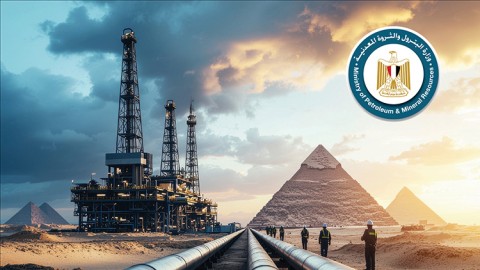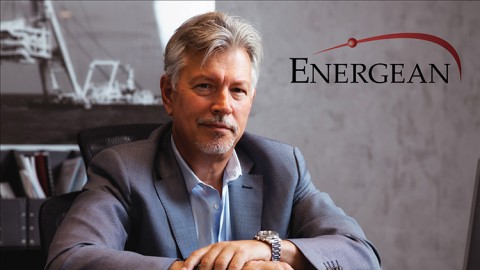It’s the time of year again, as across the world nations prepare for the world’s biggest climate-focused conference: COP. With COP28 set to be hosted by the UAE, all eyes are on the energy sector to see how it responds and engages with the event, and the industry-wide commitment to the energy transition. IOGP supports this commitment to the energy transition and works with its members to help them decarbonise whilst maintaining the careful balance of energy security and affordability.
The past year has transformed broader discussions around energy and highlighted the significance of the energy trilemma. Global geopolitical events and the subsequent energy crisis brought home to many the significance of energy security and affordability. With many having to choose between eating or heating, it highlighted how the energy trilemma affects the most vulnerable in society the most. It has meant that there is a renewed focus on creating an ‘orderly’ transition. While this appears to be the right course of action, it also puts renewed pressure on the oil and gas industry to not only invest in decarbonisation, but also to ensure safe, reliable, and cost-effective operations continue.
Despite the IEA forecasting that oil and gas will still be part of the energy mix in the future, it also associates decarbonisation with moving away from fossil fuels. Indeed, in its recent Energy Forecast, it has suggested that the world has already reached the peak of its demand for fossil fuels. It’s at this point that it is important to remember that the goal of decarbonisation is to reduce and even remove carbon from our atmosphere. Emissions are the enemy – not oil and gas. As a sector, we have an important role to play in the energy transition. Despite the broader messaging around reducing fossil fuels, it appears that others recognise it is important to engage with the oil and gas sector. COP28 being hosted in the UAE, a major oil and gas producer, highlights how key stakeholders see our role in decarbonisation.
As we’re all aware, tackling climate change while meeting global energy demand is one of the greatest challenges of our lifetime. Decarbonisation is an essential, and complicated part of the process. And must recognise that technology and innovation in particular will play a key role in the transition. We must adopt a technology-open approach to emissions reduction. The development of renewables remains critical to the energy transition; however, this must be done in a way that allows all solutions with the potential to reduce emissions to play an active role. Addressing these challenges and opportunities is daunting, and complicated – but IOGP has identified a way through, that can ensure this sector is part of the transition and seen as a driver of positive change. Its focus is on four areas: Carbon Capture and storage, Electrification; Energy Efficiency; and Flaring, Venting & Methane emissions Management. It has already published a host of reports and recommended practices and has plans for more in 2023 and beyond. Many of these reports can be accessed at https://www.iogp.org/energy-transition/
There are many exciting technologies that will support the energy transition, such as carbon capture and storage. CCUS is going to be key for the energy transition and closing the gap for a 1.5°C future. There are currently 40 different CCUS facilities in operation globally, with the capture capacity of 45 million tons of CO2. However, the IEA’s net zero emissions by 2050 pathway assesses that the world needs to capture 4 GT of CO2 by 2030 and 7.6 GT CO2 by 2050. Put simply, by 2030, that’s only 7 years away, we need to store 100 times more CO2 globally. It’s a huge task, and investment in these solutions is key. But it’s currently not there. In Europe, there are 35 projects in development, that are planned to have the capacity to store 105 MT in 2030. However, Europe needs to store between 350 to 500MT depending on the different scenarios, that’s between 3 and 5 times more than all the projects currently being constructed. We need to work together, both as an industry and with partners beyond our sector, to help bring this technology to fruition. Now is the time to jump on this opportunity. IOGP has developed state of the art literature to support CCUS adoption, providing guidance for both the sector, as well as policymakers and regulators to consider when determining legislation that will enable CCUS adoption.
Similarly, Hydrogen is another energy source that plays a key role in unlocking renewable energy integration. Globally, there is an opportunity to grow hydrogen use dramatically, but investment at the moment is low. This is despite the fact that according to the Hydrogen4EU report, more than 50% total gross final energy consumption will be supplied by non-electrified technologies in 2050, such as low-carbon hydrogen and biomass. Driven by policy, demand for hydrogen could exceed 100 million tons of H2 by 2050.
Our sector also has a responsibility to reduce its methane emissions. Detecting unplanned methane emissions and mitigating the impact of them is also key. It’s a major challenge for our industry, but with the right technology and data analysis, the industry can work to improve its methane detection and deploy technology that helps avoid flaring and venting in operations. Innovations such as flare gas recovery systems are a great example of a system that can help reduce flaring, ultimately reducing methane emissions. However, it’s clear when it comes to reducing methane emissions that a ‘one size fits all’ approach will not work, as operations are unique across the sector. In a collaboration between IOGP, Ipieca, and the Oil and Gas Climate Initiative (OGCI), we have developed guidance to help operators select and deploy methane detection and quantification technologies. Eliminating methane emissions from the upstream oil and gas industry represents one of the best short-term opportunities for contributing to climate change mitigation and for advancing the goals of the Paris Agreement.
Technology is ultimately a major enabler for decarbonisation across the sector. For example, electrification of operations creates the opportunity for oil and gas organisations to integrate renewables now, reducing the emissions associated with running sites. Even where renewable electricity isn’t available, electrifying now ensures that the sector has the technology in place to leverage green electricity where and when possible. Through its work with members, IOGP has developed guidance for key activities and studies to be conducted during project development. We have identified lessons learned from electrification schemes and are using these lessons to inform future recommendations.
More broadly, digital technologies will be essential for the sector to decarbonise. Leveraging automation to create more efficient operations can help reduce emissions, reduce costs and create a safer working environment. By leveraging technology to be more efficient, our sector can significantly improve its energy efficiency. At IOGP, we recognise the challenge in improving energy efficiencies – often, high-efficiency technology comes at an equally high price, or members aren’t aware of certain technologies existence. However, the most economical method of reducing GHG emissions is to reduce energy consumed. IOGP and IPIECA have worked together to develop the Compendium of energy and GHG efficient technologies and practices. In 2022, we identified 13 different technologies that our sector can deploy to improve its energy efficiency. Despite technologies being available, adoption in the industry is still low. McKinsey reported in 2021, 70% of digitization projects in the oil and gas sector didn’t move beyond pilot phases. To help organisations identify the right technologies for them, IOGP has developed an online technology filtering tool (https://www.iogp.org/medq), including detailed technology data sheets covering over 50 technologies, and decision trees to guide technology deployment across the sector. It’s with tools like this that we can work together to help drive this positive change forward, to help the sector play its all-important role in the energy transition.
Overall, the need for the oil and gas sector to decarbonise is only going to become more urgent. But with this challenge comes an exciting opportunity to transform how our industry operates. What is clear, is that it is possible to decarbonise fossil fuels, providing we work together to get the right infrastructure in place. Operating in siloes is only going to create barriers to success. Therefore, knowledge sharing, be that at conferences and events like COP28, or through industry bodies like IOGP, is vital. By connecting within the industry, and also with key partners outside of it, we will make decarbonisation a reality, and navigate a successful energy transition.








